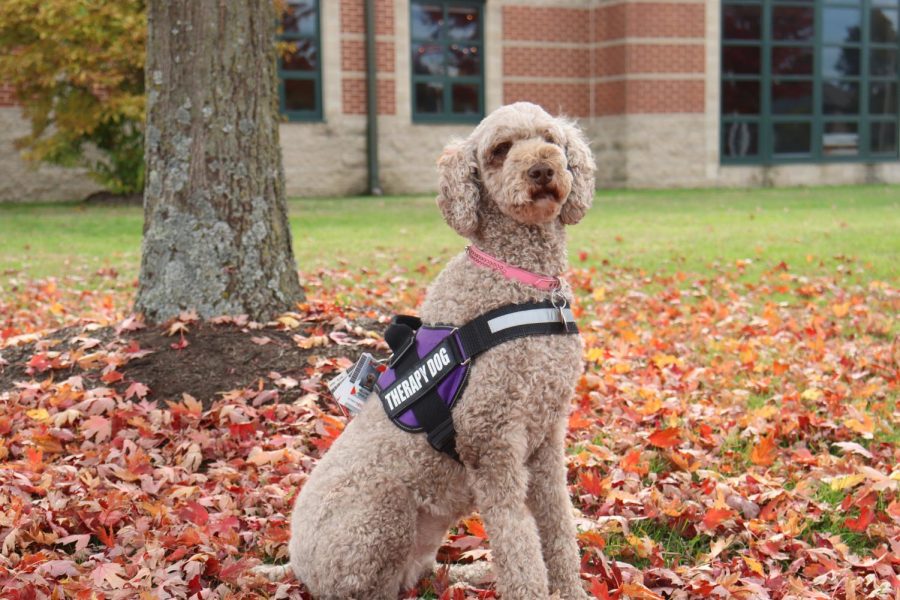Help From Man’s Best Friend
November 15, 2021
A fluffy new friend awaits visitors to the counselors’ office this year: Willow Poodle, the Nixa High School’s new therapy dog, is available for visits in Mrs. Doubrava’s room.
Nancy Doubrava, 9th grade counselor and Willow’s caretaker, says that Willow can be a comforting presence whenever students need counseling.
“If I have kids come down here, more than likely they like being with Willow,” Doubrava said. “Sometimes people don’t like dogs, and that’s OK, so I just try to make her stay down [in her bed], but sometimes it really helps, just because sometimes we don’t want to talk… we just want a dog to pet.”
How can students come to see Willow? Doubrava said students can talk with their teachers beforehand, and then they can come down when she’s available.
Assistant Principal Jeremy McCoy said Willow’s impact on the school has been beneficial to both students and staff.
“I think having a dog here has lightened the mood,” McCoy said. “Kids really enjoy seeing [Willow], I enjoy seeing her all the time, it makes my day [happier].”
According to counselor Theresa Bettmann, who works at the Ozark Counseling Center, therapy dogs are becoming more popular.
“They are far more common than even a few years ago…[Through a survey] I found many people did not use dogs because they did not have the training and did not know where to get that training.”
What breeds are best for therapy work? Any dog has potential, Bettmann says.
“Therapy dogs come in all shapes and sizes,” Bettmann said. “Some people breed specifically for characteristics that make good therapy or service dogs. However, many rescue dogs can be good for therapy work as well.”
According to Doubrava, the high school’s own Willow Poodle is a rescue.
“[Willow] actually is a rescue dog from Rescue One, so she was abused and neglected in the first year or more of her life,” Doubrava said. “Rescue One ended up getting her, which is a not-for-profit organization in Springfield.”
According to Doubrava, Willow was trained in a correctional facility in Lakin, Missouri, through Rescue One, where inmates trained her for the Canine Good Citizen test. Willow passed the test, which meant that Doubrava was able to take Willow to finish her certification as a therapy dog. Beyond the CGC test, though, different programs have their own ways to test how potential therapy dogs will interact with different settings and patients they might work with as licensed therapy dogs, according to Bettmann.
Some dogs may be more compatible with some clients than others, Bettmann says.
“Not all dogs are good for all types of therapy interventions,” Bettmann said. “It depends on the client, therapist, dog, and focus of therapy. Depending upon my focus, I might choose to work with different dogs for specific clients.”
While the title of therapy dog might be synonymous with service or emotional support dog in the eyes of some, Bettmann emphasizes that they are very different.
“Therapy dogs [have] a different role than either a service dog or an emotional support animal,” Bettmann said. “These are three very distinct and different roles… and the terms are often used interchangeably but are [not] the same thing.”






